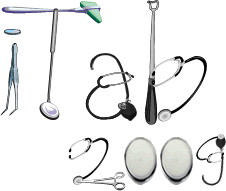Robert Allen
| Signal processing in patient assessment and care: from hospital to home |  |
| Robert Allen | |
| Professor of Biodynamics and Control Institute of Sound and Vibration Research University of Southampton |
Abstract
Biomedical signal processing and control is a rapidly growing area of research This is not really surprising, however, given the increasing interest in general, with the availability of low-cost, reliable computing power, the wealth of algorithms already developed and the potential to communicate the results of processing using efficient graphical interfaces. Despite these developments, however, the nursing staff measure body temperature with a thermometer placed under the tongue, plot the reading as a point on a graph and then, with little justification, join up the dots to produce a graph of the time series. What happened to the temperature between readings? How was the sampling frequency selected? Despite these considerations, such charts still form the bedrock of patient management at the bedside, perhaps rightly so, and are part of the nurse-patient relationship. After all, the nurse is the primary monitor of the patient’s condition. This is, of course, supplemented now by monitors and the results of diagnostic tests where the results are produced using signal or image processing. In the operating theatre or intensive care unit, monitoring systems abound to display vital signs in real time. Biomedical signals have their own characteristics and analysis techniques require appropriate development for clinical application. Many algorithms for noise reduction, feature extraction or manipulation have already been developed and, although perhaps many have not yet been used in regular clinical practice, the potential has been clearly demonstrated. Medical imaging is one area where many developments are very much down to the processing and many diagnostic tests depend upon the extraction or manipulation of signal features at some stage. Indeed, it is probably fair to say that signal processing, in some form or another, underpins much of clinical decision-making and patient management. Control of management delivery is also on the increase through regulation of drug infusion, electrical stimulation of muscle, and so on. This paper with present an overview of biomedical signal processing applications in patient management and will also indicate trends in the delivery of patient care that is increasingly available to the patient in their own home. Novel, bio-inspired approaches to signal processing will be described that are currently under development that may lead to advances in areas such as medical ultrasound imaging.
BIOGRAPHICAL SKETCH
Professor Robert Allen, BSc(Hons), PhD, CEng, FIEE, FIMechE, FIPEM
Honorary Editor of the journal Medical Engineering and Physics (http://www.elsevier.co.uk)
Founding Editor-in-Chief of the journal Biomedical Signal Processing & Control (http://www.elsevier.co.uk)
Founding Editor-in-Chief of the journal Bioinspiration & Biomimetics: Learning from Nature (http://www.iop.org/EJ/bioinsp)
Member of the Mechatronics, Informatics & Control Group Board, (Institution of Mechanical Engineers)
He is a Fellow of the Institution of Electrical Engineers, the Institution of Mechanical Engineers and the Institute of Physics and Engineering in Medicine.
Research interests are currently focused on the development and application of signal processing techniques for biomedical systems analysis and on the bio-inspired control of unmanned, underwater vehicles. Particular interests include: efficient estimation of auditory evoked potentials for assessment of hearing and of depth of anaesthesia, cerebral hydrodynamic modelling and non-invasive assessment of intracranial compliance, processing of fluoroscopic images for measurement of spine kinematics and understanding and development of bio-inspired acoustic systems.
Robert Allen holds a Personal Chair in Biodynamics and Control at the Institute of Sound and Vibration Research (ISVR), University of Southampton, UK. Following training in the machine tool industry and a period as numerical control programme engineer (Dean, Smith & Grace Ltd., in collaboration with IBM UK) he studied at the University of Leeds and graduated with BSc (Hons) in Control Engineering and was awarded a PhD for research on modelling the dynamic characteristics of neural receptors. This was followed by Postdoctoral positions at the University of Leeds (Dept. Anaesthesia) on monitoring intracranial pressure of severely head-injured patients to prevent secondary brain damage, and at the Welsh National School of Medicine, Cardiff (Dept. Anaesthetics) on a parameter estimation approach to non-invasive measurement of cardiac output.
He moved to the University of Southampton (Faculty of Medicine) in 1984 to a newly-created position as Lecturer in Biocomputation, and from there to the Department of Mechanical Engineering in 1985 as Lecturer and Senior Lecturer in Control Engineering and to the ISVR in 1997.
The Institute of Sound and Vibration Research (ISVR) is an internationally recognized centre of excellence in teaching, research and consulting. In the 2001 Research Assessment Exercise it received the top 5* rating (the University of Southampton is one of only two in the UK, where the entire Faculty of Engineering received 5*), and it achieved 23/24 for its teaching quality. The interface between technology and humans has been at the centre of its activities, with active research and teaching programs in audiology (with a highly respected MSc course), human vibration interactions, medical imaging, patient monitoring and physiological modelling. Clinics at ISVR (including the South of England Cochlear Implant Centre) and collaborations with hospitals are the core of these projects. Signal processing is a fundamental tool in all these activities, and the ISVR is internationally recognized for its expertise in this field.














